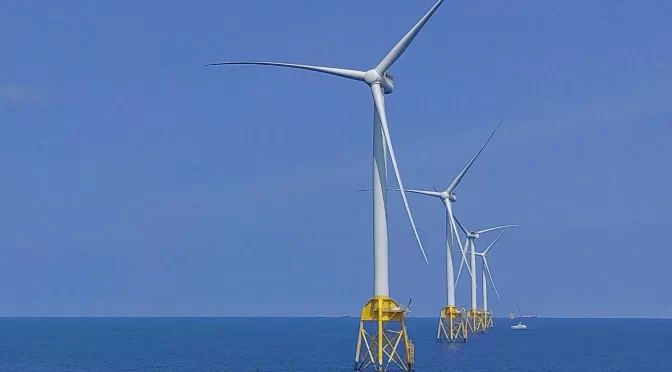Energy multinational Ørsted has unexpectedly withdrawn from agreements with the state of Maryland to develop two offshore wind projects. The decision came as a result of worsening economic conditions and challenges facing the company. Initially, Orsted had been selected by the Maryland Public Service Commission (PSC) to develop the Skipjack Wind 1 and Skipjack Wind 2 projects, which were considered crucial components of the state’s decarbonization agenda.
Orsted’s withdrawal from the projects has raised concerns about the future of offshore wind development in Maryland. The company cited challenging economic circumstances, including inflation, high interest rates and supply chain constraints, as the reasons behind its decision. Despite withdrawing from the agreements, Orsted has not completely canceled the projects and plans to continue their development and permitting processes.
Governor Wes Moore of Maryland expressed disappointment in Orsted’s withdrawal. However, he remains committed to working with lawmakers, federal partners and offshore wind developers to achieve the state’s goal of 100% clean energy by 2035. The announcement leaves Maryland with only two proposed offshore wind projects: the MarWin project and the Momentum Wind project. , both developed by US Wind.
Orsted’s decision also reflects the challenges facing offshore wind projects across the United States. Several projects have been canceled or faced setbacks due to economic uncertainty. These actions jeopardize the green energy goals set by Democratic-led states and the Biden administration. President Biden aims to deploy 30 gigawatts of offshore wind by 2030 and achieve a fully decarbonized power grid by 2035.
While some lawmakers and stakeholders have expressed concerns about affordability and disruption caused by offshore wind projects, supporters argue that these projects are essential to the transition to a cleaner, more sustainable energy future. The future of offshore wind development in Maryland and other states remains uncertain, but the push for renewable energy continues.
Title: Orsted Pulls Out of Maryland Offshore Wind Projects – FAQ Section
Q: Why did Orsted withdraw from the agreements with the state of Maryland?
A: Orsted cited worsening economic conditions, including inflation, high interest rates and supply chain constraints, as the reasons behind his decision.
Q: What were the two offshore wind projects that Orsted was initially selected to develop?
A: Orsted was selected to develop the Skipjack Wind 1 and Skipjack Wind 2 projects.
Q: What impact does Orsted’s withdrawal have on offshore wind development in Maryland?
A: The withdrawal raises concerns about the future of offshore wind development in Maryland.
Q: Did Orsted cancel the projects completely?
A: No, Orsted plans to continue the development and permitting processes for the projects despite withdrawing from the agreements.
Q: How is Governor Wes Moore of Maryland responding to Orsted’s withdrawal?
A: Governor Wes Moore expressed disappointment in Orsted’s withdrawal, but remains committed to working with stakeholders to achieve Maryland’s goal of 100% clean energy by 2035.
Q: How many proposed offshore wind projects remain in Maryland?
A: Maryland is left with two proposed offshore wind projects: the MarWin project and the Momentum Wind project, both developed by US Wind.
Q: What challenges do offshore wind projects face in the United States?
A: Offshore wind projects in the United States have been canceled or faced setbacks due to economic uncertainty, jeopardizing the green energy goals of several states and the Biden administration.
Q: What are President Biden’s goals for offshore wind?
A: President Biden aims to deploy 30 gigawatts of offshore wind by 2030 and achieve a fully decarbonized power grid by 2035.
Q: What are the arguments in favor of offshore wind projects?
A: Supporters argue that offshore wind projects are essential to the transition to a cleaner, more sustainable energy future, despite concerns about affordability and disruption caused by these projects.


